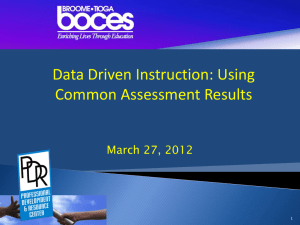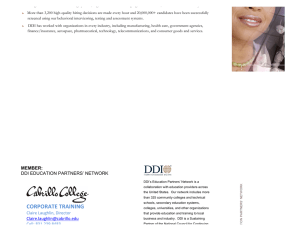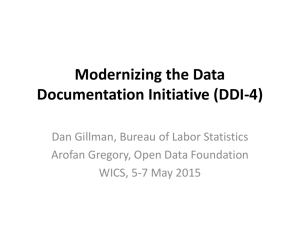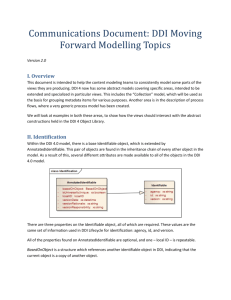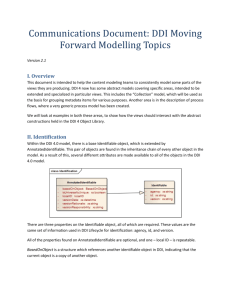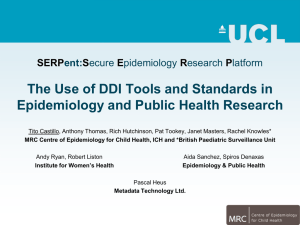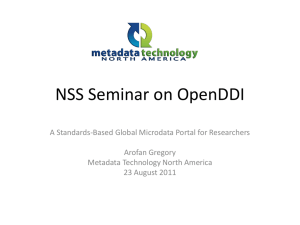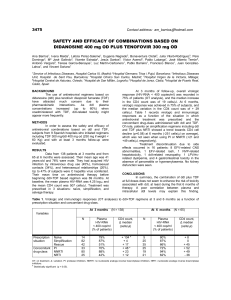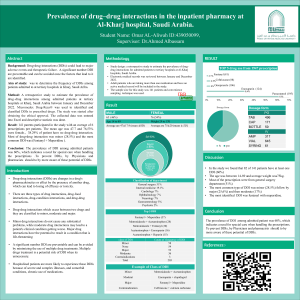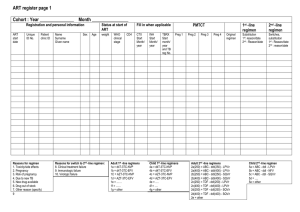DDI-RDF
advertisement
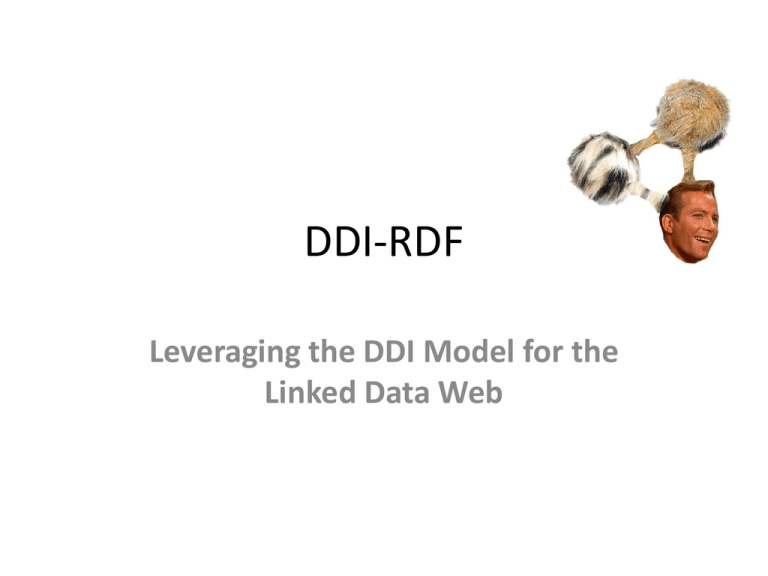
DDI-RDF Leveraging the DDI Model for the Linked Data Web Why RDF for DDI? • To increase visibility of data holdings using mainstream Web technologies (RDF) – Based on a proven metadata model – DDI! – Using an approach in line with best practice in the Linked Data community • To increase the connection between research data sets and other resources – Users can provide layers of additional linking – Similar to some methods used in qualitative research • To better identify opportunities for merging datasets and other emerging functionality such as inferencing • To improve the quality of approaches to research data within the Linked Data community – Based on a single coherent set of standards – Leveraging the experience and knowledge of the DDI community 2 The Goal • To have a single, proven, standard way of describing microdata within the Web of Linked Data using RDF • To leverage existing metadata holdings within archives, data libraries, and data producers – DDI in all versions – Process of producing RDF should be automated • To fit coherently into a broader RDF ”data” context – Microdata description and metadata – Aggregate data and metadata/tables – Classifications, concepts, and ”foundational” metadata holdings • To increase the absolute number of RDF tribbles triples on the Web! 3 discovery use case • • • • • • • • • • • Which studies are connected with a specific universe consisting of the 3 dimensions: time, country, and population? What questions with a specific question text are contained in the study questionnaire? What questions are connected with a concept with a specific label? What questions are combined with a variable with an associated universe consisting of the 3 dimensions time, country, and population? What concepts are linked to particular variables or questions? What representation does a specific variable have? What codes and what categories are part of this representation? What variable label does a variable with a particular variable name have? What‘s the maximum value of a certain variable? What are the absolute and relative frequencies of a specific code? What data files contain the entire dataset? 4 The DDI Ontology • Made for the discovering use-case • Hig level model of DDI-Codebook and DDILifecycle • Exposing complex metadata in a simple format • Uses established vocabularies 6 study | coverage 7 8 instrument | question | concept 9 10 11 values | value labels 12 13 14 variable | descriptive statistics 15 16 17 logical dataset | dataset | data file 18 19 20 conceptual model 21 22 Resources • The DDI Discovery Vocabulary, an RDF vocabulary for data description and discovery based on DDI – https://github.com/linked-statistics/disco-spec • Tools and examples to support the RDF expression of the DDI (Data Documentation Initiative) standard – https://github.com/linked-statistics/DDI-RDF-tools • SKOS extension for statistical classifications – https://github.com/linked-statistics/xkos Contributors and links • Slides by – Thomas Bosch, GESIS - Leibniz Institute for the Social Sciences, Thomas.Bosch@gesis.org – Arofan Gregory, ODaF - Open Data Foundation, Arofan.Gregory@earthlink.net – Olof Olsson, Swedish National Data Service, Olof.Olsson@snd.gu.se Presentation IASSIST 2012 http://snd.gu.se/sites/snd.gu.se/files/IASSIST_2012-DDI-RDF-Trouble_with_Triples.pdf
